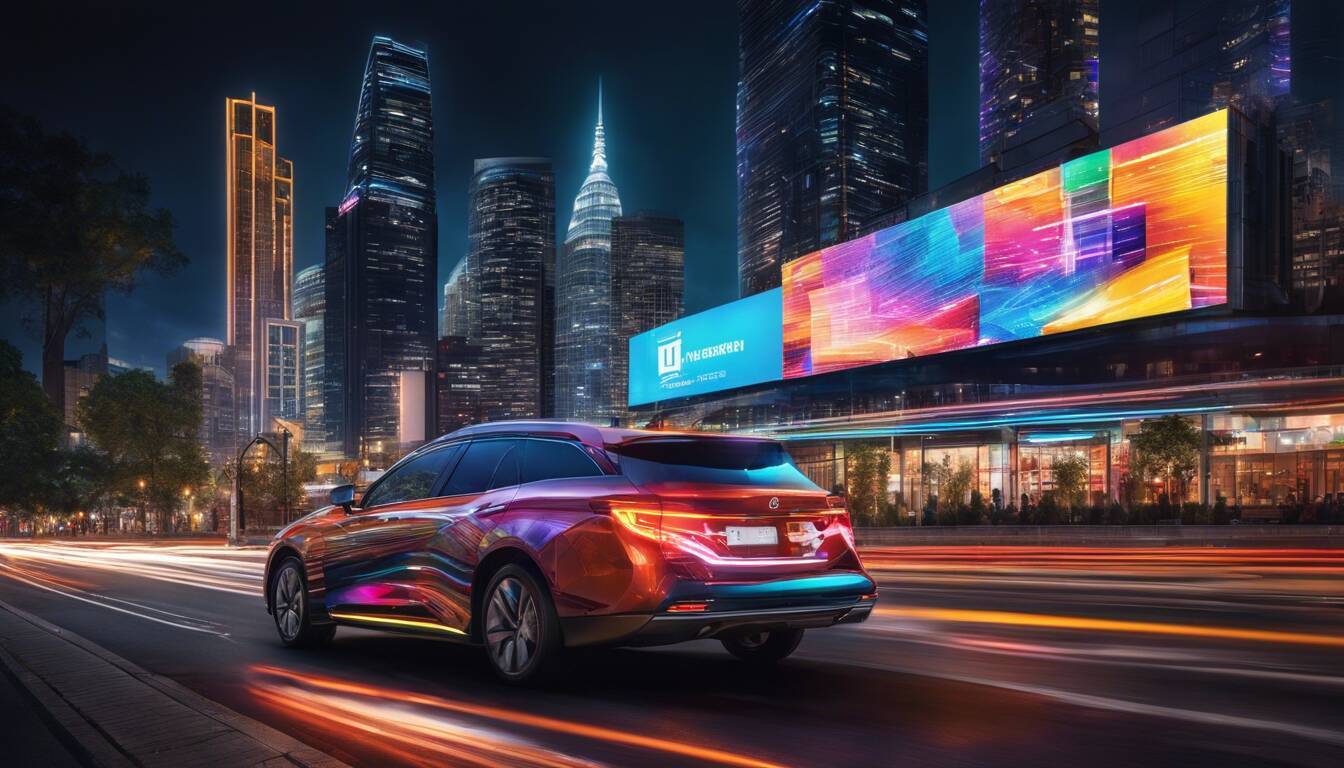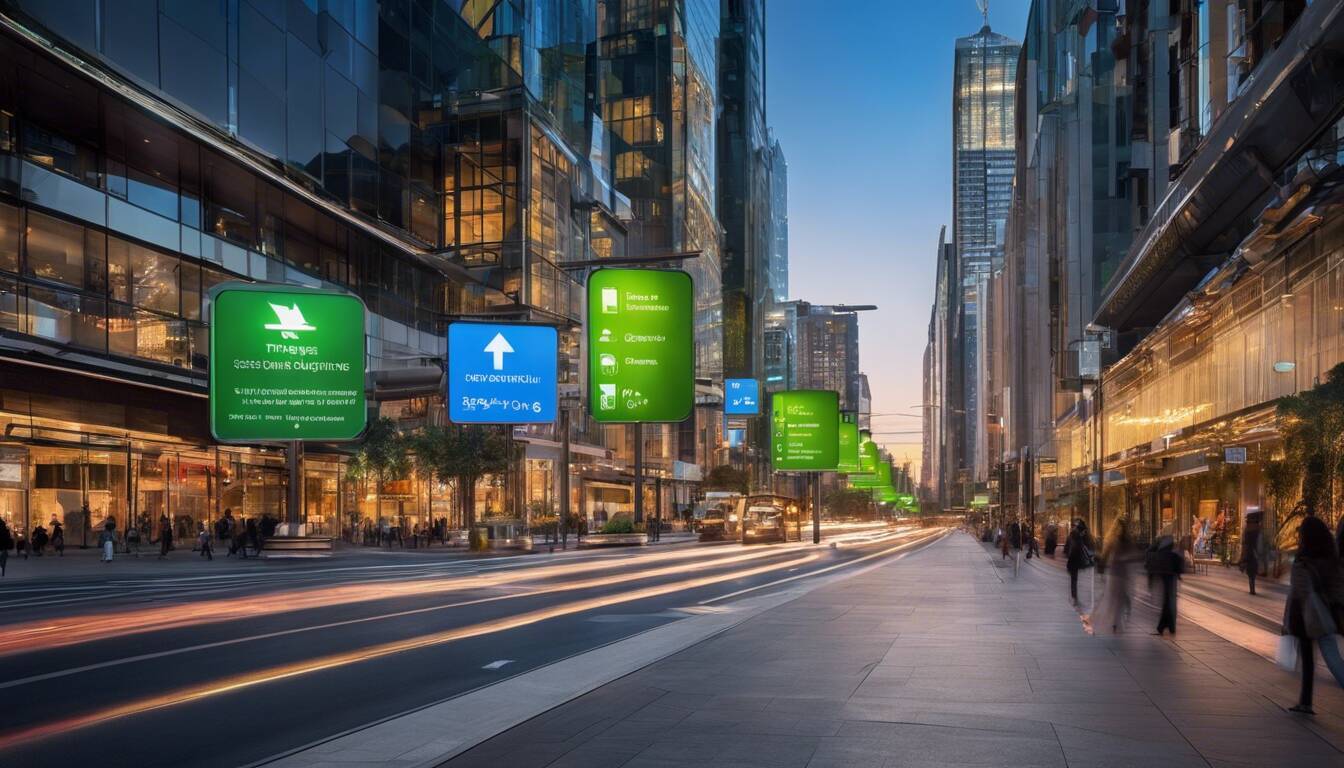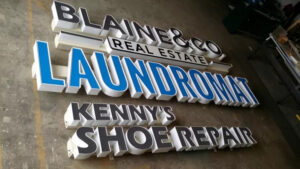Outdoor Signage Trends for 2024: Exploring the Future of Design and Innovation
3D Signs and Designs
Welcome to the world of three-dimensional signage, where creativity knows no bounds. In 2024, we will witness a continued surge in the popularity of 3D signs and designs for outdoor signage trends. This trend captivates businesses and consumers alike due to the power of depth and dimension.
Traditional signage is evolving, and the introduction of 3D elements has revolutionized the visual landscape of outdoor advertising. These signs transcend flat surfaces, incorporating raised letters or shapes that pop out and demand attention. By integrating these visually striking 3D elements, businesses can captivate their audience with signage that not only captures attention but also creates a lasting impression. A meticulously designed 3D sign goes beyond merely conveying information; it acts as an immersive visual experience that draws people in.
Consider this: You're strolling along a busy city street, surrounded by an array of storefronts vying for your attention. Among them stands a business with a bold, three-dimensional sign that literally leaps out at you. This visual uniqueness sets it apart from the rest, engraving its brand identity into your memory. That's the power of 3D signs. They establish a distinctive presence in the cluttered landscape of outdoor advertising.
Imagine a restaurant with a 3D sign that features raised elements embodying the shape of a steaming hot bowl of soup or a sizzling grill. These tangible, lifelike features immediately evoke an appetite-stimulating effect on passersby, drawing them towards the establishment without saying a word. It's not just about conveying information; it's about creating an experience.
Think of 3D signs as captivating portals into the identity, essence, and offerings of businesses. They serve as architectural elements in the public space, engaging viewers in a tactile and visual conversation that leaves a lasting impression.
As a local signage company, we pride ourselves on harnessing the potential of 3D signs to increase outdoor advertising for our clients. Our portfolio showcases an array of creative and impactful 3D signage designs tailored to help businesses stand out amidst the competitive outdoor advertising landscape.
Venturing further into the realm of outdoor signage trends reveals that embracing the allure of three-dimensional designs offers businesses an unparalleled opportunity to make a striking impact in their marketing endeavors.
The Rise of Digital and Interactive Signage
Imagine walking down a bustling street and seeing billboards come alive with vibrant displays that change before your eyes. That's the power of digital and interactive signage. Instead of static images or words, imagine advertisements that can be updated in real-time, showing different offers throughout the day or week. This new form of outdoor advertising is dynamic and engaging, providing businesses with an exciting platform to capture the attention of passersby.
Digital signage goes beyond traditional static displays by offering a multitude of benefits. Imagine being able to schedule different messages to appear at specific times of the day, or instantly update content across multiple locations without having to physically change any materials. These innovations provide businesses with flexibility and agility, allowing them to tailor their message to different demographics, promotions, and seasonal themes, all with a modern touch.
Interactivity takes this even further, transforming passive viewers into active participants. Through touchscreens, motion sensors, or even QR code interactions, pedestrians become engaged with the advertisement, creating a memorable and personalized experience. This two-way communication opens doors for businesses to gather valuable data and insights from their audience, enabling them to refine their marketing strategies and deliver more targeted content.
Consider a scenario where a clothing store uses digital signage to showcase its latest collection. With interactivity, passersby can use touchscreen displays to mix and match different outfits virtually before they even step into the store. This not only captures attention but also creates a memorable experience that increases the likelihood of potential customers visiting the shop.
As a local signage company, we understand the significance of customizable digital signage solutions. We offer businesses the ability to harness this trend for effective outdoor communication. Our goal is to empower businesses with the tools they need to create captivating and relevant content that resonates with their target audience.
In an age where attention spans are shorter than ever, digital and interactive signage offers an innovative way for businesses to stand out from the crowd and capture the interest of their audience.
Now, let's delve into the technological marvel that is revolutionizing outdoor signage, LED backlighting.
LED Backlighting: A Step Towards Innovation

Imagine strolling through a lively street at night and spotting a vibrant, glowing sign that instantly captures your attention. Chances are, it's powered by LED backlighting, a game-changing innovation in outdoor signage. LED technology has revolutionized the way businesses showcase their brand and messaging, offering several advantages over traditional lighting options that make it an attractive choice for modern outdoor signage.
LED backlighting provides energy-efficient illumination, not only reducing operational costs for businesses but also contributing to environmental sustainability. The energy-saving nature of LED technology aligns with the growing emphasis on eco-conscious practices in business operations. By adopting LED backlighting in outdoor signage, companies can demonstrate their commitment to sustainability while reaping the benefits of lower energy consumption and reduced environmental impact.
For instance, a local coffee shop that chooses to illuminate its outdoor sign with LED backlighting not only achieves a visually striking display but also aligns with the values of its environmentally conscious customer base. The glow from the LED-lit sign creates an inviting ambiance while highlighting the business's commitment to energy efficiency, an impactful statement that resonates with patrons walking by.
Furthermore, LED technology allows for vibrant lighting that significantly enhances visibility, especially during the evening hours. The powerful illumination provided by LEDs ensures that outdoor signs remain prominent and legible even in low-light conditions. This increased visibility contributes to enhanced brand exposure and effective communication of marketing messages, ultimately driving customer engagement and foot traffic for businesses.
To put it simply, incorporating LED backlighting into outdoor signs is like having a spotlight on your business. It ensures that your message shines brightly and captures the attention of potential customers amidst the hustle and bustle of daily life.
As a forward-thinking local signage company, we specialize in integrating LED backlighting into our outdoor signage solutions. By harnessing the visual impact and energy-efficient qualities of LED technology, we empower businesses to create captivating displays that stand out and make a lasting impression. With LED backlighting, outdoor signage becomes more than just a static display, it transforms into a dynamic, attention-grabbing beacon that draws people in and communicates brand identity effectively.
In the fast-evolving landscape of outdoor signage technology, durability and adaptability are cornerstones for sustained brand visibility and impact. Let's now shift our focus to exploring how protective materials and environmental adaptation play crucial roles in ensuring longevity and resilience for outdoor signs.
Protective Materials and Environmental Adaptation for Durability
When dealing with outdoor signage, durability becomes crucial. Rain, snow, heat, and UV rays can all exact a toll on signage if it's not equipped to withstand them. In 2024, the focus has shifted towards advanced materials and coatings that offer increased weather resistance and UV protection, ensuring longevity and visual appeal.
The use of high-quality materials takes center stage in ensuring durability. Advanced composite materials have become the go-to choice in outdoor signage fabrication due to their exceptional strength-to-weight ratio and resistance to environmental stressors. These materials are not only robust but also lightweight, making installation easier while maintaining durability.
Advanced techniques also involve the application of specialized coatings, which now have become a standard practice. These coatings offer a protective shield that safeguards the signage against moisture, UV radiation, and temperature variations. For instance, anti-graffiti coatings are being widely employed to repel paint, markers, and other forms of vandalism, thereby preserving the aesthetic appeal of the signage.
Another key trend is the adaptation of signage designs to harmonize with their surroundings for seamless integration. The objective is to ensure that the signage not only withstands environmental challenges but also complements its setting, whether urban or natural. This involves a thoughtful approach to design that considers color schemes, architectural styles, and landscape elements.
For example, in urban environments, signage designs are curated to align with modern architectural aesthetics and urban vibrancy. This can involve sleek metallic finishes, clean lines, and contemporary fonts that seamlessly blend with their metropolitan surroundings. Conversely, in natural settings such as parks or scenic spots, signage designs embrace earthy tones, organic shapes, and eco-friendly materials to complement the landscape without compromising durability.
As a local signage company committed to delivering superior outdoor signage solutions, we prioritize the strategic amalgamation of high-quality materials and weather-resistant designs. By integrating these advanced techniques into our processes, we ensure that our outdoor signage not only withstands the elements but also maintains its visual impact over time. Our dedication to durability goes hand in hand with our vision to enhance the visual landscape of our community through long-lasting signage solutions.
In essence, the evolution of outdoor signage trends in 2024 reflects a holistic approach towards durability and environmental adaptation. It underscores the synergy between cutting-edge materials, protective coatings, and design integration for lasting visual impact in diverse outdoor settings.
Having explored the advancements in protective materials and environmental adaptation for durable outdoor signage solutions, let's now shift gears to delve into the exciting realm of "Visual Trends in Sign Colors and Shapes".
Visual Trends in Sign Colors and Shapes
In 2024, the world of outdoor signage is undergoing a visual revolution. Businesses are no longer satisfied with blending into the background; they want to captivate attention, making bold statements through their branding. This pursuit has led to a surge in the use of vibrant and contrasting colors that create truly eye-catching signage, almost wresting attention from the surrounding environment.
Instead of sticking to safe, neutral colors that blend in, businesses are embracing bold, daring choices that add an element of surprise to their outdoor signage. This not only helps in attracting attention but also conveys confidence and modernity. Whether it's a bright pop of pink against a monochrome backdrop or a striking combination of contrasting hues, these color schemes help businesses stand out and make a lasting impression on potential customers.
Consider a sleek black and vibrant yellow contrast that's used for signage in front of an industrial building. This powerful combination grabs attention without being too loud or overwhelming.
Furthermore, traditional rectangular sign shapes are gradually becoming passé. Businesses are now exploring unconventional shapes, from asymmetrical designs to free-form structures, as a means of breaking away from conventions and creating a unique visual presence.
This openness to experimentation showcases a newfound desire for creativity and distinction in outdoor signage. Asymmetrical signage can evoke a sense of movement or dynamism, aligning perfectly with businesses striving for an innovative and forward-thinking image.
For instance, imagine a pet store using an asymmetrical bone-shaped sign instead of the conventional rectangular design. This not only communicates the nature of the business in an instant but also creates intrigue and memorability.
As a local signage company, we understand the importance of aligning with these contemporary aesthetics. We've made it our mission to offer customizable signage options that cater to these evolving visual trends. Our goal is to enable businesses to showcase their brand with modern and visually captivating outdoor signage, allowing them to express their brand identity boldly and creatively.
By staying attuned to these visual trends, businesses can elevate their outdoor branding, making an impactful statement within their respective landscapes.
As we delve deeper into the intricacies of outdoor signage, it becomes evident that location and installation play a vital role in effective signage design.
Location and Installation: A Vital Aspect of Signage Design
Imagine decorating a cake with the most exquisite frosting, carefully detailing every corner only to place it in a dark corner where no one can see it. That's the same as creating a stunning sign for your business but not placing it where people can easily notice it. It's essential to consider the surroundings, visibility, and ease of viewing when deciding where to install outdoor signage.
When deciding on the best location for your outdoor sign, consider factors like foot traffic patterns, distance from the road, line of sight for drivers and pedestrians, and even the time of day when it will be seen most. It should "pop" and draw attention without being obtrusive. For instance, if it's too close to a busy intersection or pedestrian crossing, it may end up overlooked due to congestion.
An ideal location often strikes a balance between visibility and unobtrusiveness, ensuring that your sign is noticed without becoming an eyesore or distraction.
Moreover, knowing local laws and regulations about signage placement is crucial. They often dictate aspects such as sign size, setback requirements for roads or property lines, and lighting restrictions. Failure to comply with these regulations could result in costly fines or even demands to remove non-compliant signs.
For example, if you're designing an outdoor menu board for a restaurant, its location should be strategic, visible from the road but not blocking any entrance or window. This ensures that passing drivers and pedestrians can quickly glance at the menu without obstructing business operations.
Now, consider professional installation services as a crucial investment rather than an optional add-on. Proper installation ensures that your sign is firmly secured and won't succumb to harsh weather conditions. It also helps maintain its appearance over time. Choosing professional installation services reduces the risk of damage caused by improper mounting techniques or materials.
Professional installers possess the expertise and tools needed to get the job done right the first time. They know how to work with different types of surfaces, be it concrete, metal, wood, or glass, and understand how to secure signage without compromising its structural integrity.
These professionals also consider external factors such as wind load calculations for larger signs, ensuring that they remain stable during inclement weather. Plus, they meticulously handle electrical components if your sign includes illumination features, safeguarding against potential hazards.
In essence, strategic placement and proper installation are fundamental components of effective outdoor signage. By understanding these vital aspects of design, businesses can leverage their signs as powerful marketing assets that drive visibility and brand recognition.
Revolutionize your signage with Lightning Quick Signs, your go-to destination for eco-friendly solutions! Say goodbye to environmental concerns without compromising on quality or impact. Ready to make the switch? Contact us today at 228-467-1718 and let's create sustainable signage that leaves a lasting impression. Join us in building a greener future, one sign at a time, with Lightning Quick Signs!



